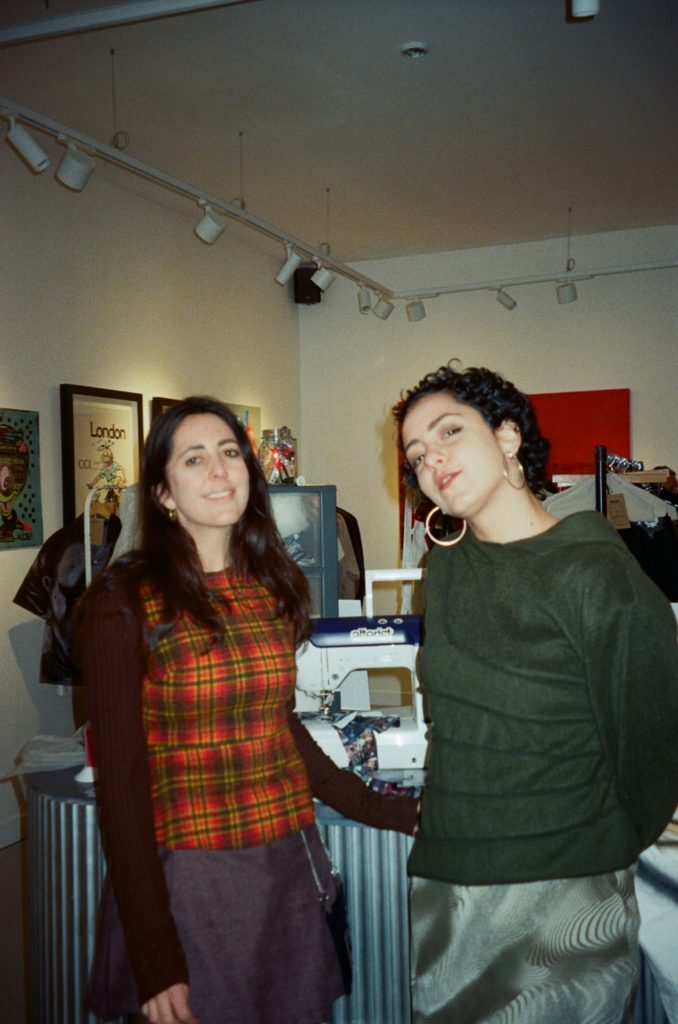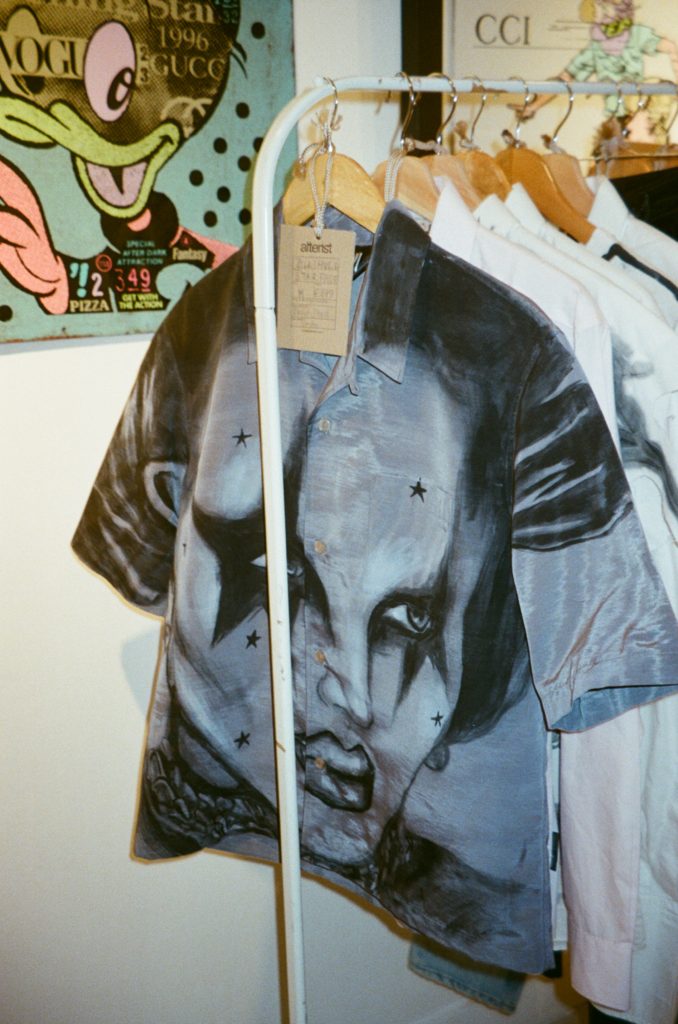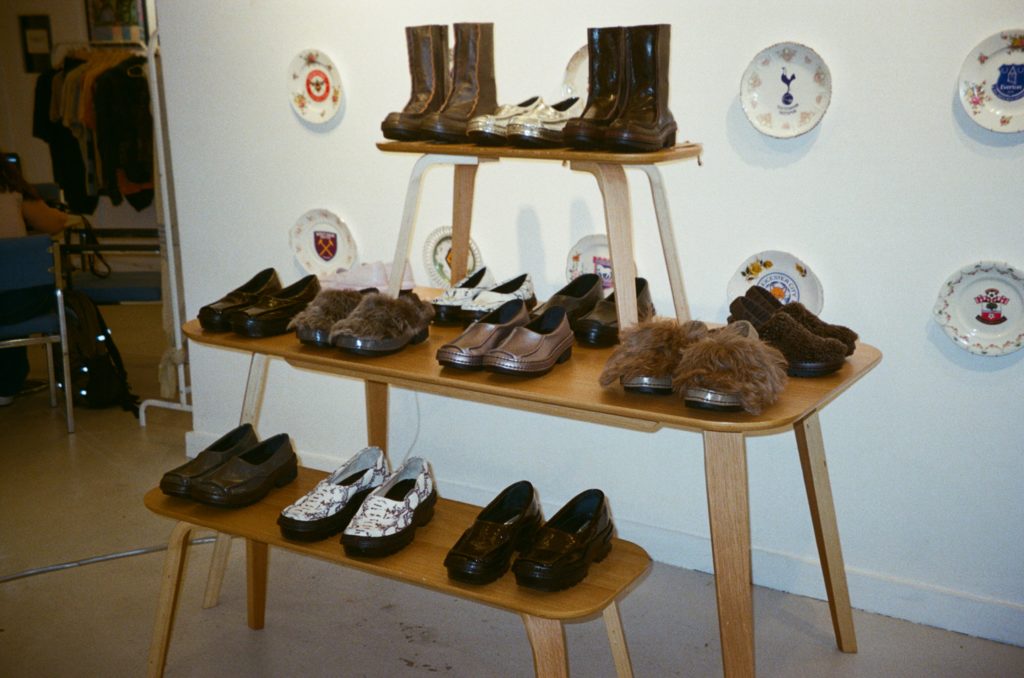

Hannah and Martina at Camden Open Air Gallery
Image: Loana Rondot
Olli Hull
Image: Loana Rondot

From 1–14 September, Alterist will be popping up at Reselfridges in the Accessories Hall at Selfridges London, transforming the space into a live working studio and showroom for upcycled fashion. Over two weeks, ten designers from the Alterist community will showcase and sell their latest collections, featuring limited-run, one-of-a-kind pieces reworked from pre-loved, excess, and discarded materials into wearable art.
Earlier this year, we sat down with Hannah and Martina to discuss Alterist’s mission, the importance of community and their journey to making upcycling an integral part of the fashion industry.

Hannah: Alterist is a platform, and now an ecosystem, for upcycled fashion. Martina and I met in 2019 through an activist group campaigning around the fashion industry’s impact. That work achieved amazing things, but it focused mainly on raising awareness and changing consumer habits rather than being directly part of the solution.
Through activism we met many incredible upcycling designers, and we noticed there wasn’t a dedicated UK platform supporting them. That insight led us to create Alterist, which launched at the end of 2022 as the first marketplace for upcycled fashion. Since then, we’ve grown rapidly, with over 130 designers on the platform, 200+ in our wider community, and members in 18 different countries.
From the beginning, our mission has been clear: to reduce textile waste. Alongside the marketplace, we now work with brands to repurpose excess stock, returns, and offcuts by matching them with designers and managing the process from concept to finished product.
Martina: Alterist is for everyone, there isn’t one set aesthetic. When we curate, our main priority is quality and authenticity. We carefully check that every piece is genuinely upcycled, to avoid greenwashing and ensure transparency.
Hannah: For pop-ups and events, we also think about context: which designers’ work will resonate in certain regions or spaces. Ultimately, it’s about giving independent designers the best possible opportunity to reach people who will appreciate their craft.
Hannah: Fast fashion has taught consumers to expect clothes at impossibly low prices – prices that often hide the exploitation behind them. With Alterist, we aim to re-educate people about the value of clothing.
At physical events, our tags show how many hours a designer has spent on a garment. On the platform, we also display the weight of materials that have been reused. These details make the invisible visible: the time, resources and creativity that go into each piece, and the environmental impact saved by upcycling.

Martina: Upcycled fashion is almost always one-of-a-kind. Shoppers need to see and try pieces in person to really connect with them. It’s about finding the garment that feels like it was made for you.
But beyond that, in-person experiences are essential for community. In an increasingly digital, AI-driven world, people crave real connection. Our pop-ups and events bring together designers, artists, and customers to share ideas, collaborate, and simply enjoy being in the same space.
Hannah: There’s also an important educational aspect. Many people don’t understand how much work goes into creating an upcycled piece. It’s often more complex than producing new garments. At our events, we run live customisation sessions where customers can watch their clothes being transformed. It highlights both the creativity involved and the value of the designers’ work.
Martina: Just go for it. Experiment, test, and don’t be afraid of things not working out – that’s how you learn and evolve.
Use what’s already available: there are enough garments in existence to clothe the next six generations, so there’s no need to buy new materials. Charity shops, resale platforms, or even unexpected items can all be reworked creatively.
Hannah: Most importantly, enjoy the journey. Alterist has changed a lot since we first launched, and that’s part of the process. Be open, collaborate, and lean into community, tackling fashion’s challenges requires many different ideas and collective action.
Hannah: We’re always looking for new collaborations, whether with brands holding excess stock, designers wanting to join the community, or even musicians and creatives who want to contribute to our events.
Martina: Alterist is about collective action. We want to keep growing our ecosystem, creating opportunities for designers, and showing customers the value and beauty of upcycled fashion.

To learn more about Alterist, visit alterist.com or follow @alteristmarketplace.
Subscribe to our newsletter for the latest Fashion District updates, and follow us to keep up-to-date with our latest events and opportunities: